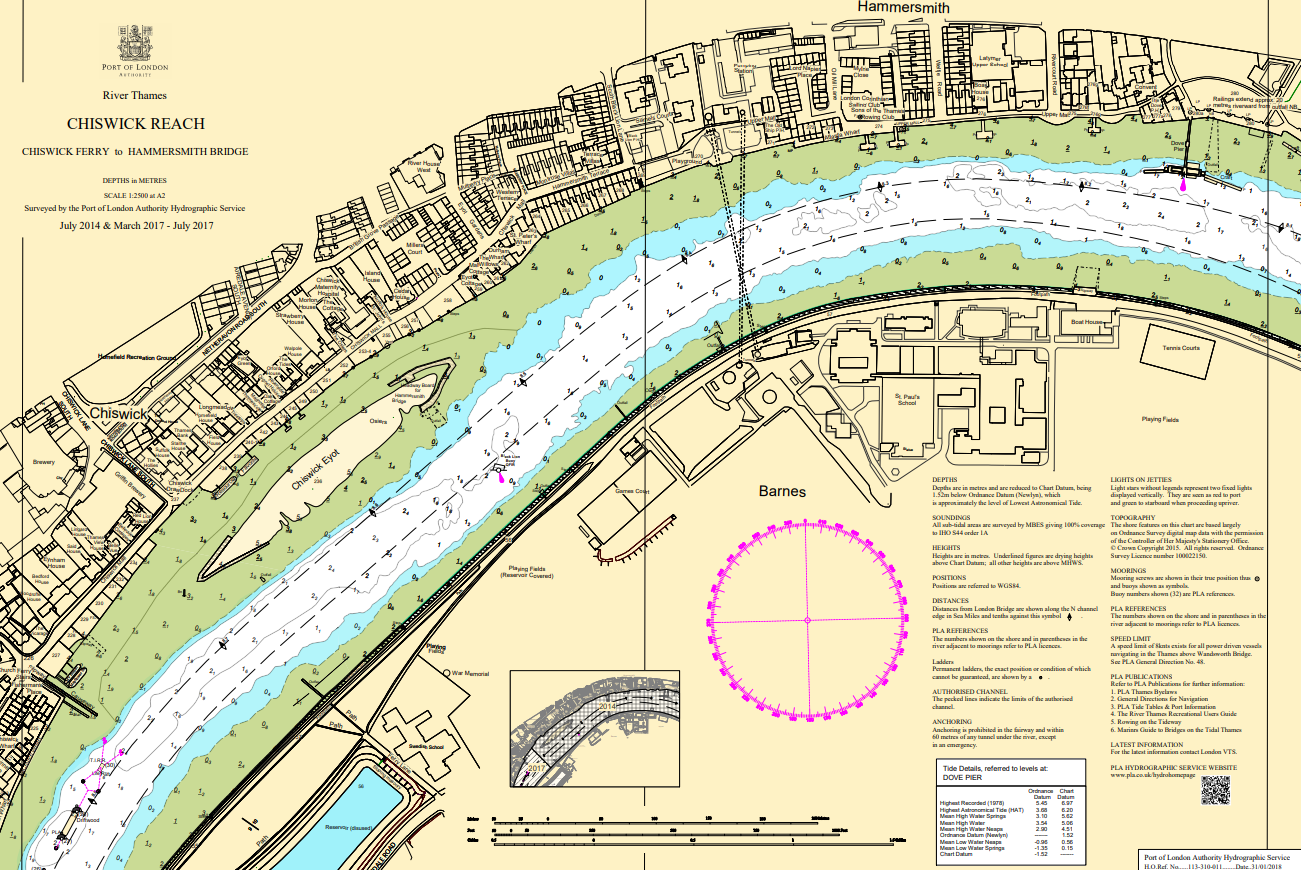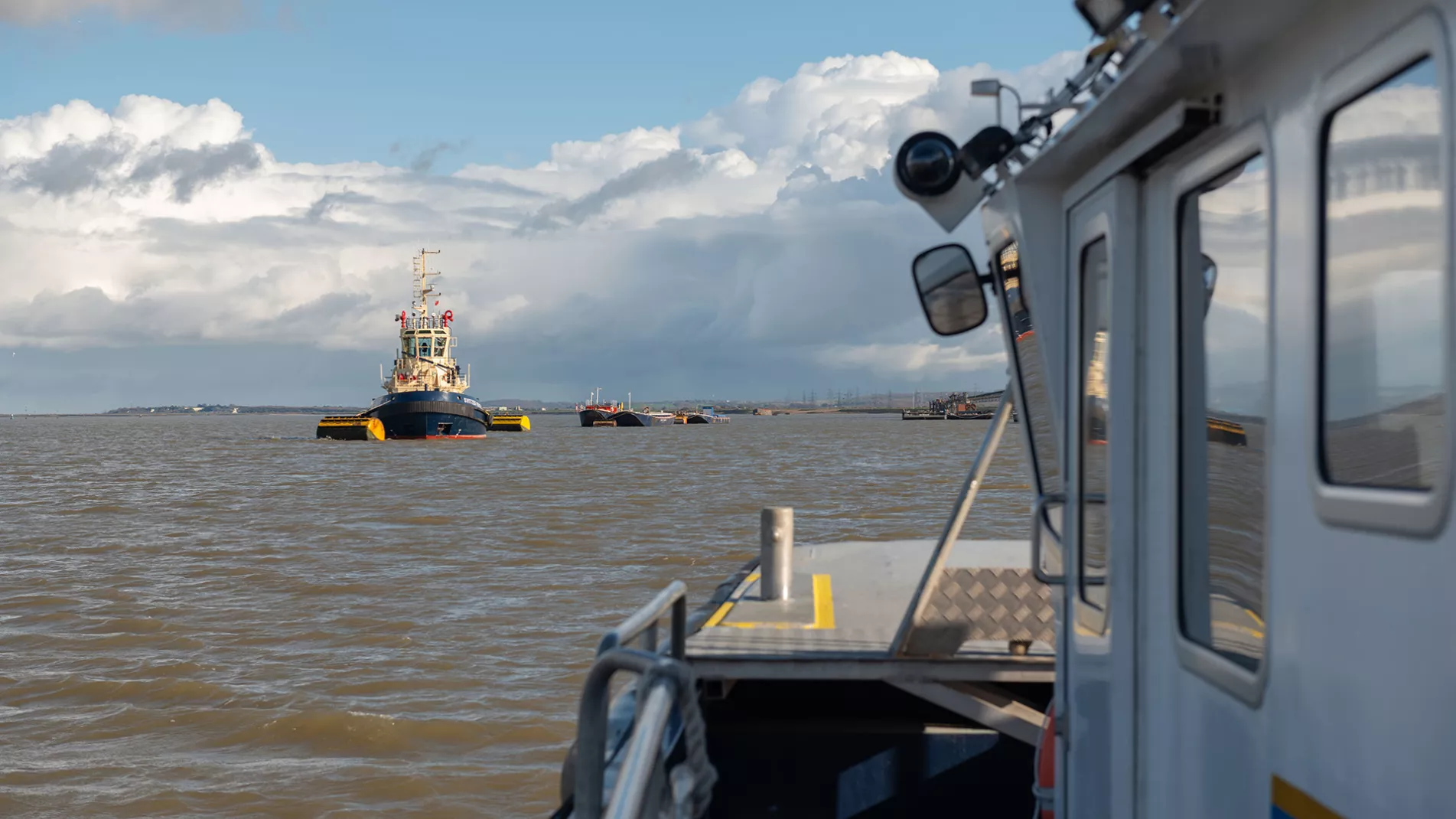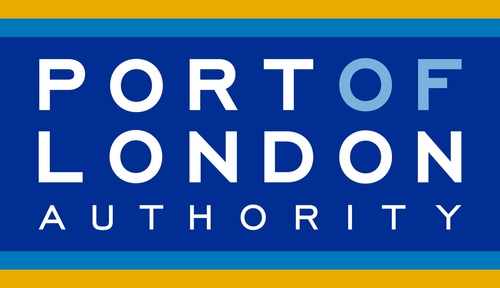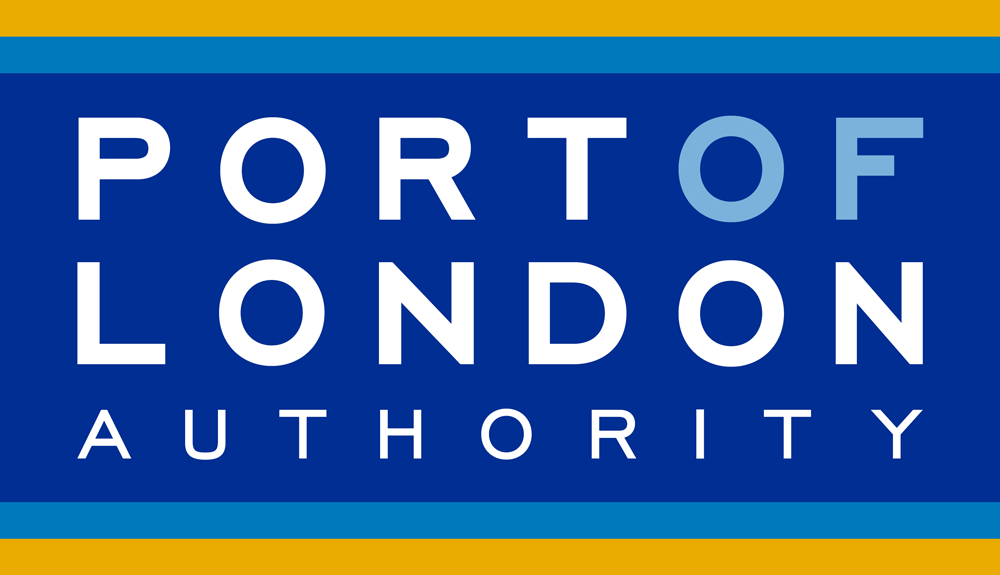Live Tides
NOTICES TO MARINERS
Charts & Surveys

Incident reporting
Life-threatening emergencies on the river:
Call 999 and ask for the Coastguard
For near miss, safety observations and incident reporting click below

Navigational risk assessment
Guidance to operators and owners
On this page
The advice contained in this section is intended to provide vessel owners, operators and masters with an overview of the risk assessment process and examples of how such risk assessments can be undertaken.
In addition, the PLA, through the Harbour Master or the Marine Compliance Manager, are able to provide guidance and advice in respect of the risk assessment process.
Email [email protected] in the first instance with your enquiry and contact details. The person best suited to help will be in contact.
Introduction
The Ports and Marine Facilities Safety Code (PMSC) requires that all ports must base their management of marine operations (i.e.i.e., their powers, policies and procedures) on a formal assessment of the hazards and risks to navigation within their port. Furthermore, port authorities must maintain a formal Marine Safety Management System (SMS) developed from that risk assessment.
The Port of London Authority (PLA) maintains such a Marine SMS.
It is important therefore, that where there are marine operations which fall outside the scope of the PLA SMS, those operations are assessed to determine the likely risk to navigational safety. By determining this we can establish what, if any, additional mitigations are required to reduce that risk to an acceptable level. The Harbour Master will advise operators if any such operation or trade falls outside the scope of the PLA Marine SMS.
It is logical, and not unreasonable, that the method of risk assessment undertaken by owners/operators is the same, or similar to, that employed by the PLA. The result of this specific risk assessment can then interface assimilate seamlessly with the wider port SMS.
The Risk Assessment Process
It is important to recognise that an effective and comprehensive risk assessment, and indeed the resultant safety management system, can only be achieved with the total commitment of both senior management and the staff involved. There needs to be a ‘buy-in’ by all concerned therefore effective communication and openness is vital.
The process must be seen for what it is – of benefit to the whole organisation, and in this case the wider port. It is therefore important for management to involve vessel masters and crews, as well as the PLA, at an early stage and keep the relevant Harbour Master appraised of progress. The PLA Harbourmaster will provide advice if requested and that advice should be considered and followed as deemed necessary.
Definitions:
Hazard is something that has the potential to cause harm.
Risk is a combination of frequency of occurrence and consequence (outcome).
The risk assessment will typically involve five stages as follows:
1. Data Gathering and Familiarisation
This initial stage has two main objectives: to allow the team undertaking the risk assessment to become familiar with the operation in question and to assess the existing (vessel/organisational) safety management structure, identifying any relevant hazards and risks.
The work should include, but not be limited to:
- A review of current (and relevant) organisational, vessel management and operational procedures;
- A thorough assessment of the operation(s) in question from a safety of navigation perspective;
- Interviews with the vessel skipper, crew, management and where necessary contractors or principals;
- Auditing of selected marine/navigational safety procedures and legislative requirements;
- A review of the requirements, limitations, technical and contractual requirements of the operation/trade in question; and
- A review of any established incident database or similar records.
2. Hazard Identification
This phase aims to identify known hazards likely to be encountered because of the nature and/or area of the proposed operation along with any existing risk control measures in place to mitigate those hazards. It also seeks to identify any consequential new hazards created as a result of the proposed service or operation. Structured Hazard Identification meetings should be held involving relevant marine staff, management, relevant customers and if desired, the PLA. The PLA can provide advice on the facilitation of such workshops.
Examples of hazards identified in the PLA SMS are:
- Collision – During Berthing / Un-berthing
- Wash - Passing Traffic
- Grounding
- Contact - Bridge
- Contact - Jetties, Berths, during passage
- Loss of Hull Integrity
- Swamping
- Fire/Explosion
Note:
1. Contact means any vessel hitting a facility, bridge or other moored, anchored or fixed object.
2. Collision means two vessels colliding whilst at least one is underway (including allisions).
3. Risk Analysis
Stage 3 introduces the concept of risk in a qualitative way to prioritise the hazards identified during Stage 2 and assess their impact on navigational safety. As shown above, risk is the combination of likelihood and consequence. Prioritisation is an essential part of the process, as clearly, the greater the potential impact posed by a hazard, the greater the need to ensure that there are robust mitigations in place to minimise this impact.
Sorting and ranking the hazard identification output and adding the likelihood component (i.e. how often such a hazard could happen) generates the risk profile. The likelihood of incidents can be established using professional advice, judgement and/or experience and, where appropriate, historical data. However, such historical information may not be available for new specialist trades or for one-off specialist operations.
Normally, risks are assessed in four ways against a common frequency scale:
- consequence to life;
- consequence to the environment;
- consequence to port authority operations; and
- consequence to port users.
Such an approach not only assesses the impact of hazards on port safety, but also their impact on other important areas of the port infrastructure.
4. Risk Assessment
This process compares existing operations and procedures supported by relevant control measures with the new risk profile created by the introduction of the new trade or operation. It identifies gaps, which will require the introduction of new or enhanced risk control measures to reduce the level of risk to an acceptable level.
5. Risk Control
This stage identifies the specific control measures to be adopted. Cost benefit analysis techniques are used at this stage to support the identification and choice of recommendations.
Again, Stages 3-5 are likely to be best achieved through dedicated workshop(s) attended by representatives of all those involved.
Linking to the PLA navigational Safety Management System
The scope of work addressed in Stages 1-5 will depend upon the nature of the operation being considered and how far removed it is from established port marine operations already covered by the PLA’s Marine SMS.
In any event, the outcome of the risk assessment process will identify:
- Whether the Harbour Master is able to approve the operation; and if so
- What additional risk control measures, if any, are required to reduce the new risk to acceptable levels.
If the process has identified any new hazards to navigation, the hazard will be scored, and those details, together with information on associated risk control measures, will be incorporated into the PLA’s hazard management database. Alternatively, the process may simply confirm that the proposed operation/trade relates directly to one or more existing hazards to navigation. In such cases, any new risk control measures or changes to existing risk controls, will be incorporated into the hazard, which will be rescored accordingly.
Further information
The PLA is happy to supply owners/operators with further information and advice on its approach to the risk assessment of navigational safety.
Either of the District Harbour Masters or Deputy Harbour Masters will be happy to answer any questions you may have.
Working groups
Navigational Risk Assessment Working Groups (NRAWG) bringing together practicing mariners whose knowledge and experience is relevant to the nature of any particular issue, hazard, risk control measure or circumstance, which such a group is convened to consider.
Following any incident, event, new trade or change in circumstances the district Harbour Master will consider the need to establish a Navigational Risk Assessment Working Groups in support of the PLA's compliance with the Ports and Marine Facilities Safety Code (PMSC).
Discover


 Introduction
Introduction